General Motors have inked a Memorandum of Understanding, a preliminary agreement that could lead to joint work on everything from hydrogen fuel-cells to the development and production of new gas and battery-powered vehicles. But the MoU raises questions about the future of GM’s current relationship with Japanese automaker Honda.

GM CEO Barra has launched a number of major changes in her decade tenure. A deal with Hyundai could add to that record.
While it could take months, even years, for any formal deal to come together, GM and Hyundai have taken the first steps towards a potentially broad new partnership that, they said in a statement, could cover “co-development and production of passenger and commercial vehicles, internal combustion engines and clean-energy, electric and hydrogen technologies.”
Officials stressed that the new Memorandum of Understanding the carmakers signed does not necessarily mean that any formal deals will come together. This is a non-binding agreement, said a GM spokesman, and simply means they will explore potential areas of collaboration. But industry watchers said that there could be substantial benefits that would help bring new products to market faster and at a lower cost, while yielding bottom-line benefits for both Hyundai and GM.
This marks the first time Hyundai has begun exploring potential tie-ups with an erstwhile competitor, several analysts stressed, and reflects the changing nature of the auto industry. GM, on the other hand, has had a long history of such partnerships and joint ventures. One currently underway pairs it with Honda – but Thursday’s announcement raises questions about whether that partnership might be in trouble.
The MoU
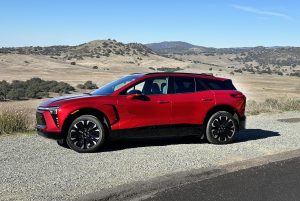
There could be an opportunity to jointly develop new EVs. But whose technology would be used? GM’s new Chevy Blazer shown here.
The document signed by Hyundai Motor Group Executive Chair Euisun Chung and GM CEO and Chair Mary Barra is a memorandum of understanding. That’s a non-binding framework that builds on preliminary talks the two companies have already held. It allows them to take things even further, exploring ways that they could partner on a variety of different projects.
A closer look at the statement they jointly issued indicates this could cover narrow areas, such as the development of both internal combustion engines and green powertrains using battery power or hydrogen. But an alliance could go much further, taking on “co-development and production of passenger and commercial vehicles,” the companies said.
“GM and Hyundai have complementary strengths and talented teams. Our goal is to unlock the scale and creativity of both companies to deliver even more competitive vehicles to customers faster and more efficiently,” said Barra after meeting with her Hyundai counterpart in New York City.
The potential benefits
The auto industry is in the midst of more dramatic change than has been seen in over a century. There is the push to green powertrain technologies, such as PHEVs, EVs and fuel-cell vehicles. Manufacturers are developing connected and autonomous vehicles and, in the case of Hyundai and several other manufacturers, they’re even working on flying passenger vehicles and cabs. The industry is also struggling to find ways to reduce manufacturing costs.
After rapid growth between 2019 and 2023, the growth in EV sales has slowed to around 10% this year and the adoption of battery technology “is not going to be (as) quick” as many had forecast just a few years ago, said Stephanie Brinley, principal automotive analyst with S&P Global Mobility. And because it is going to take longer it becomes more important to share the capital costs.”
At the extreme, noted several analysts, GM and Hyundai might choose to jointly develop and produce vehicles. Or they could seek ways to jointly produce future products. That could prove to be particularly useful with EVs considering the slow ramp-up of sales and the need to keep assembly plants running at or near full capacity.
Perhaps “the biggest potential benefit would be driving up economies of scale and lowering manufacturing costs,” said Brinley.
More Business News
- Stellantis Dealers Demand Help Rebuilding Sales, Earnings
- Lucid Teases Tesla Model Y Fighter
- Jaguar Says Transition to EVs has Been “Hugely Frustrating”
Taking it global
The MoU isn’t limited to the U.S. or South Korea, as Hyundai’s Chung noted. “This partnership will enable Hyundai Motor and GM to evaluate opportunities to enhance competitiveness in key markets and vehicle segments, as well as drive cost efficiencies and provide stronger customer value through our combined expertise and innovative technologies.”
That could help the two automakers in different ways, depending upon what – if any – actual partnerships and joint ventures develop out of the MoU. Hyundai is today the world’s third-largest automaker by sales volume.
Once the biggest of the big, GM has dropped down the charts, notably since Barra was named CEO a decade ago and began abandoning or selling off money-losing operations, such as the German-based Opel.
But each manufacturer has markets where it’s weak and could use some assistance from a stronger partner. Europe is one example. Hyundai has gained significant traction there over the past two decades. GM is just looking at a possible comeback based on its expanding EV line-up.
The Honda factor
Should something solid emerge from the MoU it might create some challenges for the existing relationship between GM and Honda, Japan’s third-largest automaker. They currently have a number of different partnerships in operation:
- GM is producing the first long-range EVs its partner has offered in the U.S. market, the Honda Prologue and the more expensive Acura ZDX;
- They are jointly developing fuel-cell technology, with hardware produced at a facility in suburban Detroit; and
- Honda is a major investor in GM’s San Francisco-based autonomous vehicle subsidiary, Cruz.
The two automakers ended another venture earlier this year that was planned to help develop low-cost EVs.
What might happen if GM decided to pursue the development of fuel-cell technology with Hyundai? GM spokesman Svigos didn’t have an answer for that but did send over a statement from the automaker noting that, “GM and Honda continue to develop and manufacturer electric vehicles…advance the development and production of state-of-the-art fuel cell technology…and other areas that will transform mobility. Our joint efforts across many areas continue in earnest.”

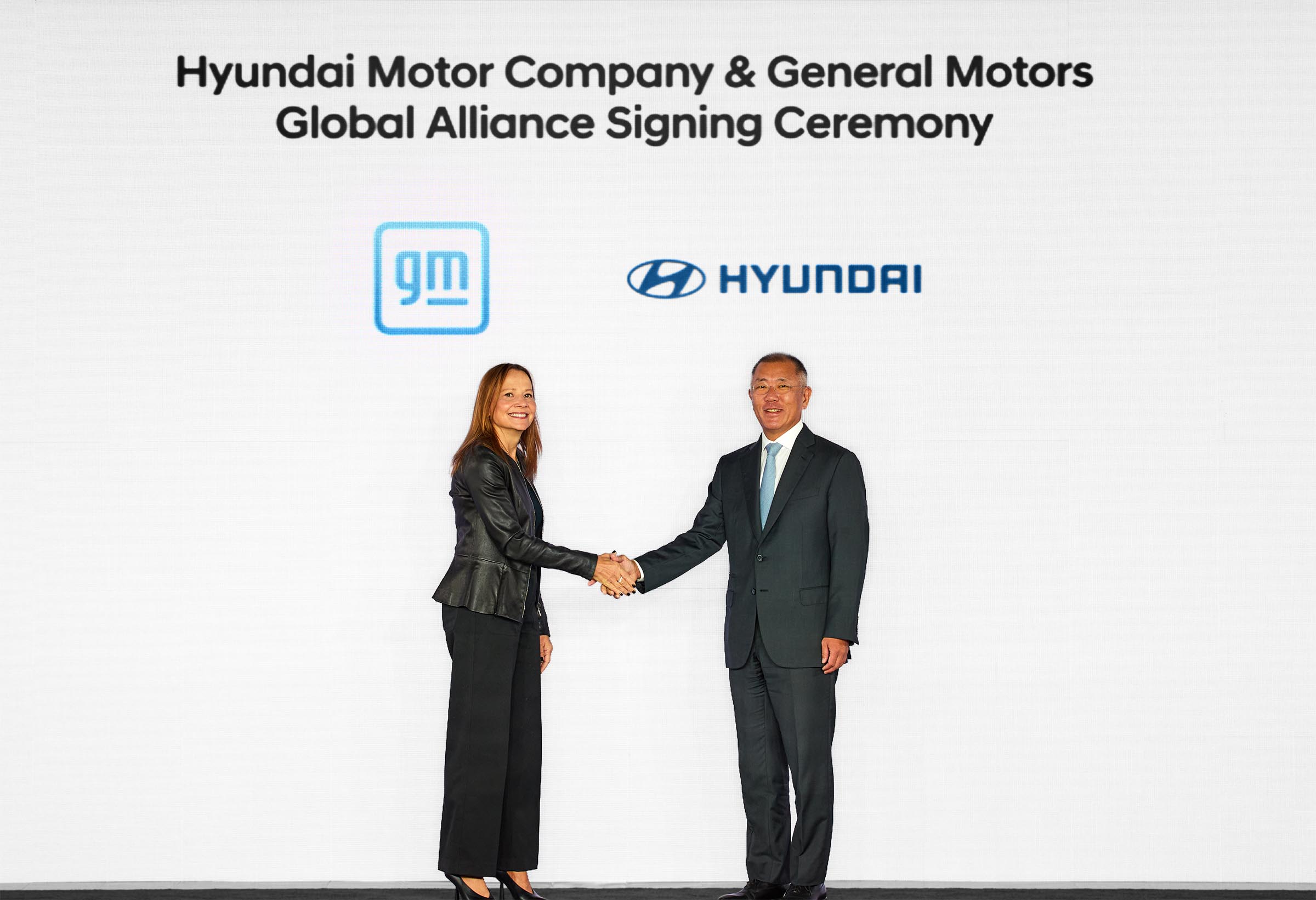
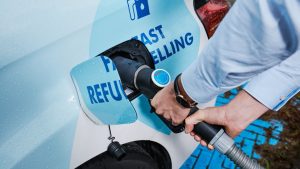
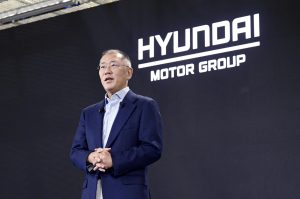
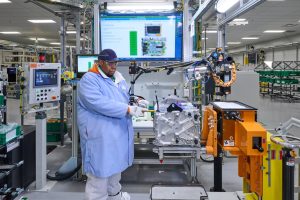

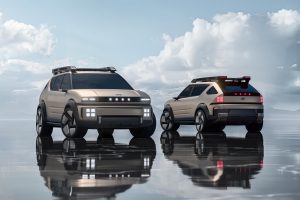



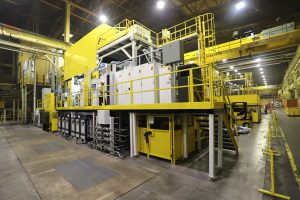

This gets GM to their long term goal: market cars that other companies build. No design studios, no Engineering, no test tracks, just a dealer network to funnel in the cash.
Good job, Mary.
News flash, acres of land with office space for sale in Warren.
Second news flash, UAW looking for new President.
Third news flash, (me too) Ford in (no so) secret discussions with Toyota.